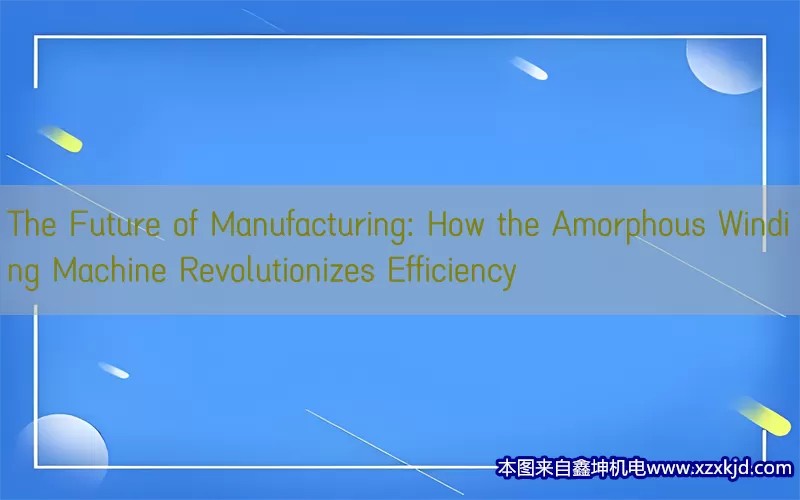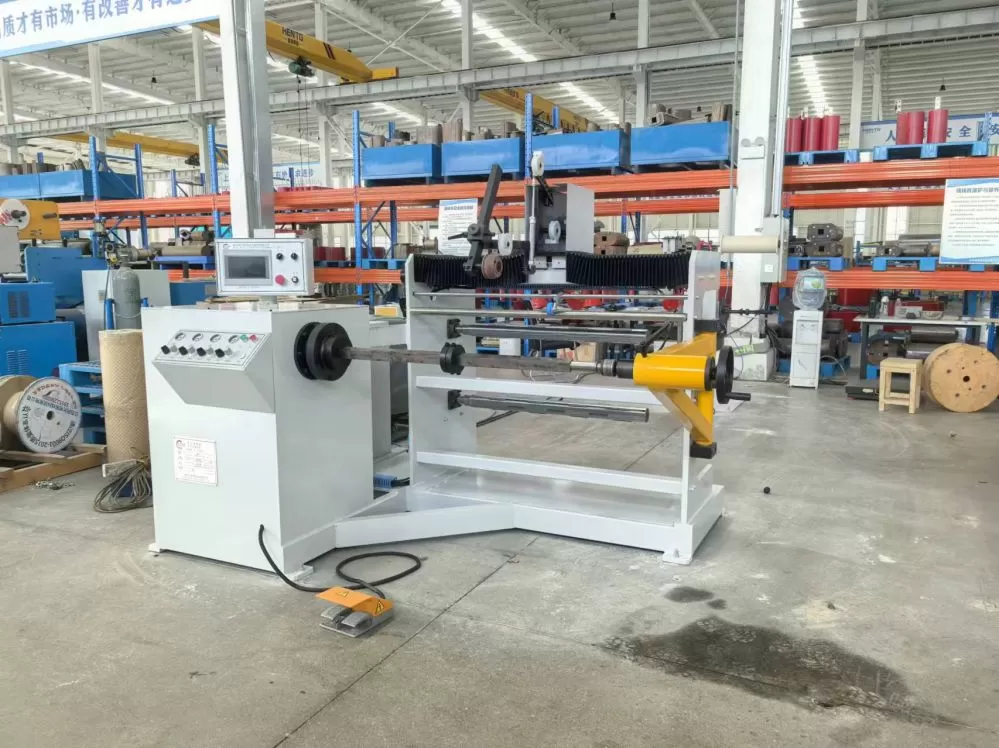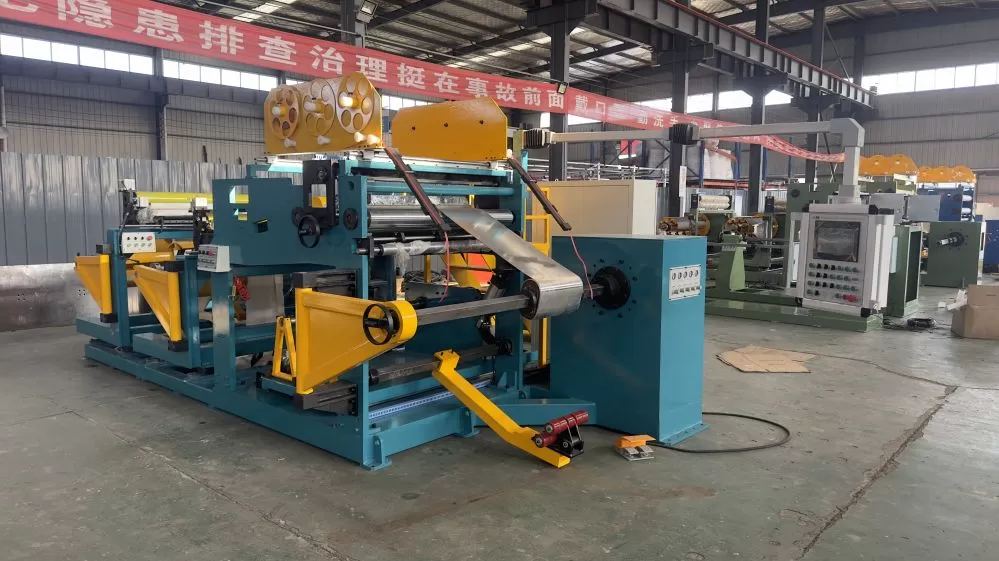The Future of Manufacturing: How the Amorphous Winding Machine Revolutionizes Efficiency
In today's fast-evolving industrial landscape, businesses are continually seeking ways to optimize production efficiency, reduce costs, and maintain a competitive edge. Amid these advances, one groundbreaking innovation has taken center stage: the amorphous winding machine. Designed to wind magnetic cores made from amorphous alloys, this machine is revolutionizing industries that rely heavily on transformers, motors, and electrical systems by dramatically improving performance, energy efficiency, and sustainability.

Understanding Amorphous Alloys and Their Significance
Before diving into the transformative power of the amorphous winding machine, it's crucial to understand what makes amorphous alloys so special. Amorphous metals, unlike traditional crystalline metals, have a disordered atomic structure. This non-crystalline configuration offers several key benefits, including lower magnetic losses, higher electrical resistivity, and exceptional mechanical strength.
In electrical applications, particularly in transformers and inductors, amorphous alloys significantly reduce core losses. Traditional silicon steel cores, widely used in these applications, suffer from substantial energy dissipation through eddy currents and hysteresis losses. However, amorphous cores drastically cut these losses, making them ideal for energy-efficient electrical systems.
The Role of the Amorphous Winding Machine
The amorphous winding machine is purpose-built to handle the delicate nature of these advanced materials. It specializes in winding amorphous metal ribbons with extreme precision, ensuring that the resulting cores maintain their structural integrity and optimal performance characteristics.
What sets the amorphous winding machine apart from other winding technologies is its precision control and automation. As these machines are designed to work with thin, fragile amorphous metal ribbons, they employ advanced winding algorithms, real-time tension control, and high-speed automation to avoid damaging the material during production. This high degree of precision guarantees that the final product—whether it's a transformer core, inductor, or any other magnetic component—performs to its maximum potential.
Efficiency and Sustainability in Focus
One of the most compelling reasons why the amorphous winding machine is gaining widespread attention is its contribution to sustainability. With the growing emphasis on energy conservation and environmental responsibility, manufacturers are under pressure to adopt technologies that reduce energy consumption and minimize their carbon footprint.
Amorphous cores, when produced using winding machines, can slash energy losses in transformers by up to 70% compared to traditional materials. This not only leads to lower operating costs but also aligns with the global push for greener technologies. As energy demand continues to rise, especially in sectors like renewable energy and electric vehicle manufacturing, the use of amorphous cores will likely become the industry standard—driven by the efficiency of these winding machines.
Applications Across Multiple Industries
The versatility of the amorphous winding machine extends its reach across various industries. From power distribution and renewable energy systems to electric vehicles and smart grids, the machine plays a pivotal role in the production of critical components. Its ability to create highly efficient magnetic cores means that companies in these sectors can offer better-performing products while adhering to stricter energy standards.
In particular, industries focusing on renewable energy, such as solar and wind power generation, stand to gain immensely from this technology. The efficient cores created by amorphous winding machines ensure that energy converters and transformers operate with minimal energy loss, helping to make renewable energy systems more viable and cost-effective.
The Advantages of Advanced Automation
One of the standout features of the amorphous winding machine is its integrated automation systems. These systems reduce the need for manual intervention, thereby decreasing human error and increasing production consistency. With automation, manufacturers can achieve higher throughput rates and scale production to meet growing demand without compromising on quality.
Automation also allows for better real-time monitoring of the winding process. Sensors embedded in the machine monitor variables like tension, temperature, and speed, ensuring that each core is produced with the same exacting standards. This ensures that the quality of every component remains consistent, even when production volumes increase.
Moreover, predictive maintenance features in these machines can alert operators to potential issues before they escalate, minimizing downtime and reducing maintenance costs. This leads to a smoother production process and helps manufacturers meet tight deadlines while maintaining high-quality standards.
.1. Reducing Material Waste
Another significant benefit offered by the amorphous winding machine is its ability to reduce material waste. Traditional winding methods often result in high levels of material loss due to inconsistencies in the winding process, especially when dealing with fragile materials like amorphous alloys. However, the precision engineering and automated control systems of the amorphous winding machine drastically reduce waste by ensuring that each layer of the ribbon is wound with minimal error.
This reduction in waste not only contributes to cost savings but also aligns with broader environmental sustainability goals. By using fewer materials to produce the same number of components, manufacturers can reduce their environmental impact, conserve resources, and improve their overall efficiency. This is especially important in today’s manufacturing environment, where companies are being held to higher standards of corporate responsibility and sustainable practices.
Industry 4.0 and the Future of Manufacturing
The adoption of amorphous winding machines is also paving the way for the next phase of industrial evolution: Industry 4.0. With the integration of Internet of Things (IoT) technologies and data analytics, these machines are becoming smarter and more interconnected. Manufacturers can now gather real-time data from their winding machines, allowing for enhanced decision-making and continuous improvement of the production process.
For instance, data collected from winding machines can be analyzed to optimize machine settings, reduce cycle times, and improve overall efficiency. Furthermore, the IoT capabilities of these machines enable remote monitoring and diagnostics, allowing technicians to troubleshoot issues from anywhere in the world. This level of connectivity and automation empowers manufacturers to stay agile and competitive in an increasingly digital world.
Challenges and the Road Ahead
While the amorphous winding machine offers numerous advantages, there are still challenges to overcome. The high initial cost of adopting this technology can be a barrier for smaller manufacturers. However, as the technology becomes more widespread and economies of scale come into play, prices are expected to decrease, making it more accessible to a broader range of industries.
Additionally, while amorphous cores offer excellent energy efficiency, they can be more brittle than traditional materials, posing challenges in handling and processing. Advances in machine design, however, continue to mitigate these issues, ensuring that the benefits of amorphous materials outweigh the challenges.
Conclusion: The Future of Sustainable Manufacturing
The amorphous winding machine represents a significant leap forward in the field of manufacturing. By combining precision, efficiency, and automation, it enables companies to produce high-performance components while reducing energy consumption, material waste, and environmental impact. As industries across the globe push toward more sustainable practices, the adoption of amorphous winding technology is set to become a cornerstone of modern manufacturing.
This machine is not just a tool; it’s a key to unlocking the future of efficient, sustainable, and innovative production methods. Whether in the renewable energy sector, electric vehicles, or power distribution, the amorphous winding machine is poised to play a pivotal role in shaping the next generation of industrial growth.
提示:在享受本文内容的同时,请注意版权归属 徐州鑫坤机电设备有限公司https://www.xzxkjd.com如果您觉得有价值欢迎分享,但请务必注明出处,感谢您的理解,谢谢!
以下部分内容需要登录查看 立即登录
相关内容
- Revolutionizing Efficiency: The Role of Silicon Steel Core Cutting Machines in Modern Manufacturing
- Press Machine Industry Insights & Trends: Unveiling the Future of Manufacturing Efficiency
- Transforming Efficiency and Precision in Manufacturing: The Power of Edge Folding Machines and Turni
- The Ultimate Guide to High and Low Voltage Winding Machines: Efficiency Meets Precision
- Revolutionizing Industrial Manufacturing with the Silicon Steel Winding Machine
- The Evolution of High-Voltage Foil Winding Machines: Revolutionizing Efficiency and Precision in Ele
- The Power of Precision: Revolutionizing Industry with Press Machines (压机)
- 供需裂口持续扩大:2025年铜价暴涨,产业链如何应对?
- 铜,新时代的“石油”?2025年价格狂飙背后的战略博弈
- 从能源革命到智能时代:2025铜价暴涨背后的全球新逻辑
- 铜价创历史新高!绿色转型与供需失衡背后的财富浪潮
- 2025铜价为何一飞冲天?三大核心驱动力深度解析
 简体中文
简体中文 繁體中文
繁體中文 English
English Nederlands
Nederlands Français
Français Русский язык
Русский язык Polski
Polski 日本語
日本語 ภาษาไทย
ภาษาไทย Deutsch
Deutsch Português
Português español
español Italiano
Italiano 한어
한어 Suomalainen
Suomalainen Gaeilge
Gaeilge dansk
dansk Tiếng Việt
Tiếng Việt Pilipino
Pilipino Ελληνικά
Ελληνικά Maori
Maori tongan
tongan ᐃᓄᒃᑎᑐᑦ
ᐃᓄᒃᑎᑐᑦ ଓଡିଆ
ଓଡିଆ Malagasy
Malagasy Norge
Norge bosanski
bosanski नेपालीName
नेपालीName čeština
čeština فارسی
فارسی हिंदी
हिंदी Kiswahili
Kiswahili ÍslandName
ÍslandName ગુજરાતી
ગુજરાતી Slovenská
Slovenská היברית
היברית ಕನ್ನಡ್Name
ಕನ್ನಡ್Name Magyar
Magyar தாமில்
தாமில் بالعربية
بالعربية বাংলা
বাংলা Azərbaycan
Azərbaycan lifiava
lifiava IndonesiaName
IndonesiaName Lietuva
Lietuva Malti
Malti català
català latviešu
latviešu УкраїнськаName
УкраїнськаName Cymraeg
Cymraeg ກະຣຸນາ
ກະຣຸນາ తెలుగుQFontDatabase
తెలుగుQFontDatabase Română
Română Kreyòl ayisyen
Kreyòl ayisyen Svenska
Svenska հայերեն
հայերեն ဗာရမ်
ဗာရမ် پښتوName
پښتوName Kurdî
Kurdî Türkçe
Türkçe български
български Malay
Malay मराठीName
मराठीName eesti keel
eesti keel മലമാലം
മലമാലം slovenščina
slovenščina اوردو
اوردو አማርኛ
አማርኛ ਪੰਜਾਬੀName
ਪੰਜਾਬੀName albanian
albanian Hrvatski
Hrvatski Suid-Afrikaanse Dutch taal
Suid-Afrikaanse Dutch taal ខ្មែរKCharselect unicode block name
ខ្មែរKCharselect unicode block name




